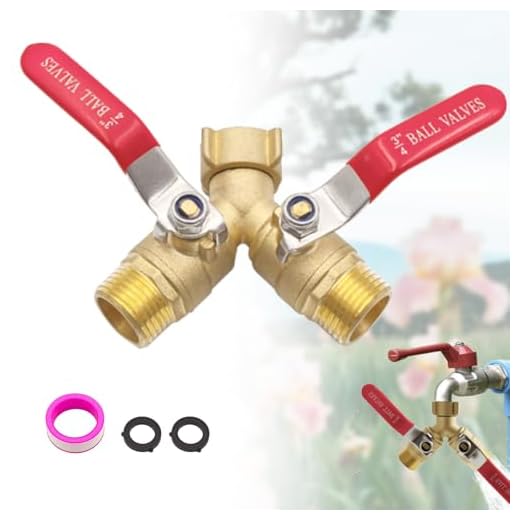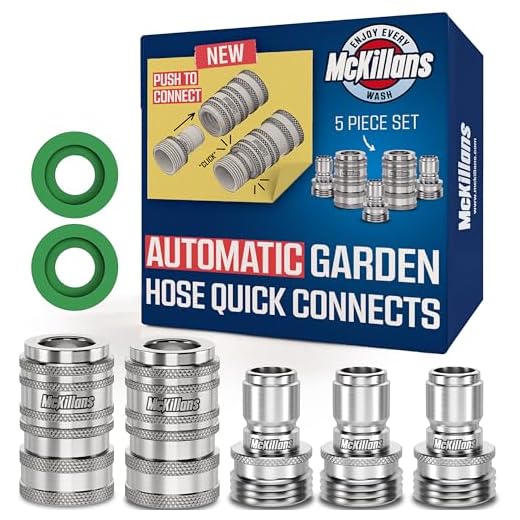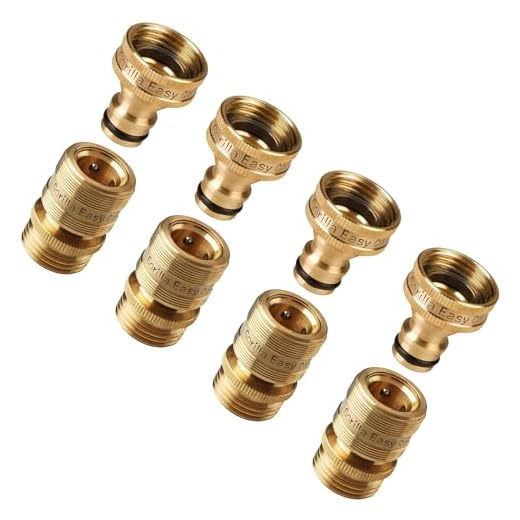


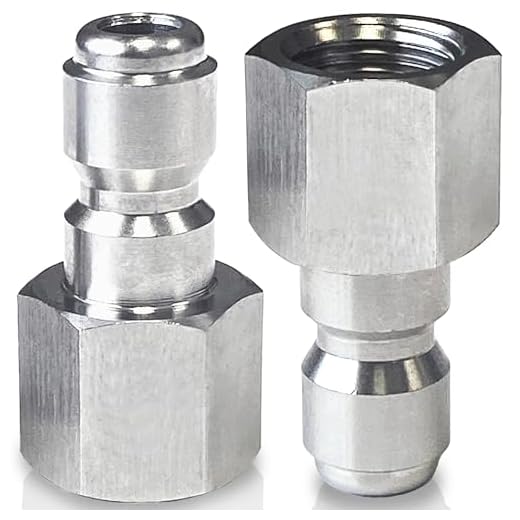
To achieve an optimal link between your water source and cleaning appliance, a standard brass coupling is your best choice. This durable connector guarantees a secure fit, preventing leaks that can hinder performance. Opt for a model that matches the diameter of your inlet; typically, 1/2 inch or 3/4 inch fittings are most common.
When selecting a coupling, consider those with a quick-release mechanism. This feature enables effortless switching between tasks without the hassle of unscrewing fittings manually. This not only saves time but also minimizes wear and tear on both the appliance and your plumbing setup.
Finally, ensure that the threads on your fittings are compatible; mismatched threads can lead to frustrating leaks. Look for adaptors if necessary, but always prioritise quality materials such as brass or stainless steel for longevity and reliability.
Choosing the Right Fitting for Your Water Supply
For optimal functionality, I recommend a quick-release fitting with a ¾-inch diameter. This size is standard in many homes and provides a secure connection without leaks. Look for models that feature durable brass or high-quality plastic construction to ensure longevity and resistance to wear.
Additionally, consider a model with a swivel feature. This allows for uninterrupted flow and minimizes kinking in the supply line, which can hinder water delivery. Make sure the threads are compatible with your supply line – either coarse or fine threads – to avoid mismatching.
If your cleaning machine requires specific fittings, check its specifications beforehand. Some devices may necessitate an adaptor or a specific thread pitch. Always prioritise compatibility to avoid unnecessary complications during setup.
Many suppliers also offer kits with various components for versatility. Such kits can be beneficial if you’ll use different sprayers or clean different surfaces. Choose ones that provide easy assembly without the need for special tools.
Regular maintenance of fittings is advisable. Check for cracks or wear over time and replace any damaged parts promptly to maintain a tight seal and prevent leaks. This ensures your cleaning equipment runs efficiently for many years.
Understanding Pressure Washer Inlet Types
The first step in effective cleaning is knowing the type of inlet your machine uses. Typically, you’ll find three common types: threaded, quick-connect, and bayonet. Each has distinct characteristics that affect compatibility with the supply line.
Threaded inlets feature standardised screw fittings, allowing for a secure, tight seal. This is ideal when a reliable connection is needed, preventing leaks during operation. Measure the diameter of the inlet to choose the correct size.
Quick-connect inlets make attaching and detaching a breeze with a simple push-pull mechanism. This design is perfect for those who switch between different attachments frequently, saving time and effort.
Bayonet inlets require a twist-lock motion for secure assembly and disassembly. This type is less common but offers a solid connection suitable for high-pressure applications. Familiarity with your machine’s specifics will ensure optimal performance.
Lastly, always check manufacturer guidelines for compatible fittings. Oversized or mismatched inlets can lead to pressure loss or damage, undermining performance. Accurate knowledge will enhance the efficiency of your cleaning tasks.
Identifying Your Garden Hose Connector Size
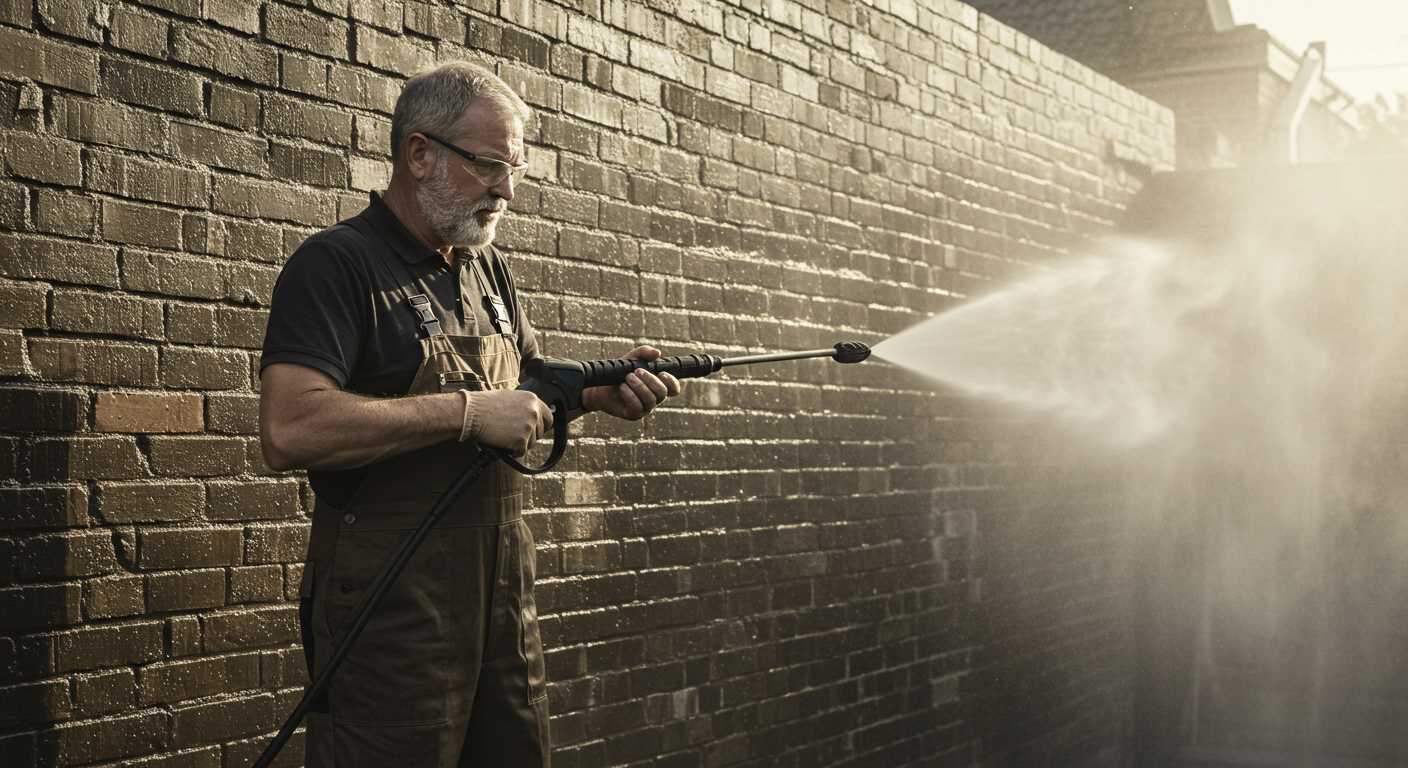
Measure the diameter of your existing water line at the threaded end. Most standard fittings fall into two common sizes: 1/2 inch and 3/4 inch. To ensure accurate measurement, use a tape measure or ruler at the widest point of the threads.
If you have an older model, it might be worthwhile to double-check compatibility, as some vintage systems use less common sizes. Remember that the measurement should be taken from the outside of the threads for precision.
Once you have your measurement, remember to consider the threading type–most applications use either National Pipe Thread (NPT) or Garden Hose Thread (GHT). NPT is tapered while GHT is straight, affecting how the fittings engage each other. Ensuring the right type will prevent leaks and inefficiencies.
If you’re dealing with discrepancies between measurements, a thread adaptor might be necessary. These adaptors easily bridge differences in size or thread type, ensuring a tight seal and uninterrupted water flow.
Always ensure compatibility between fittings; mismatched sizes or threads can lead to leaks or poor performance. It’s also wise to check for any wear on the existing components before engaging new attachments, as even a small fault can affect efficiency.
Selecting the Right Adapter for Compatibility
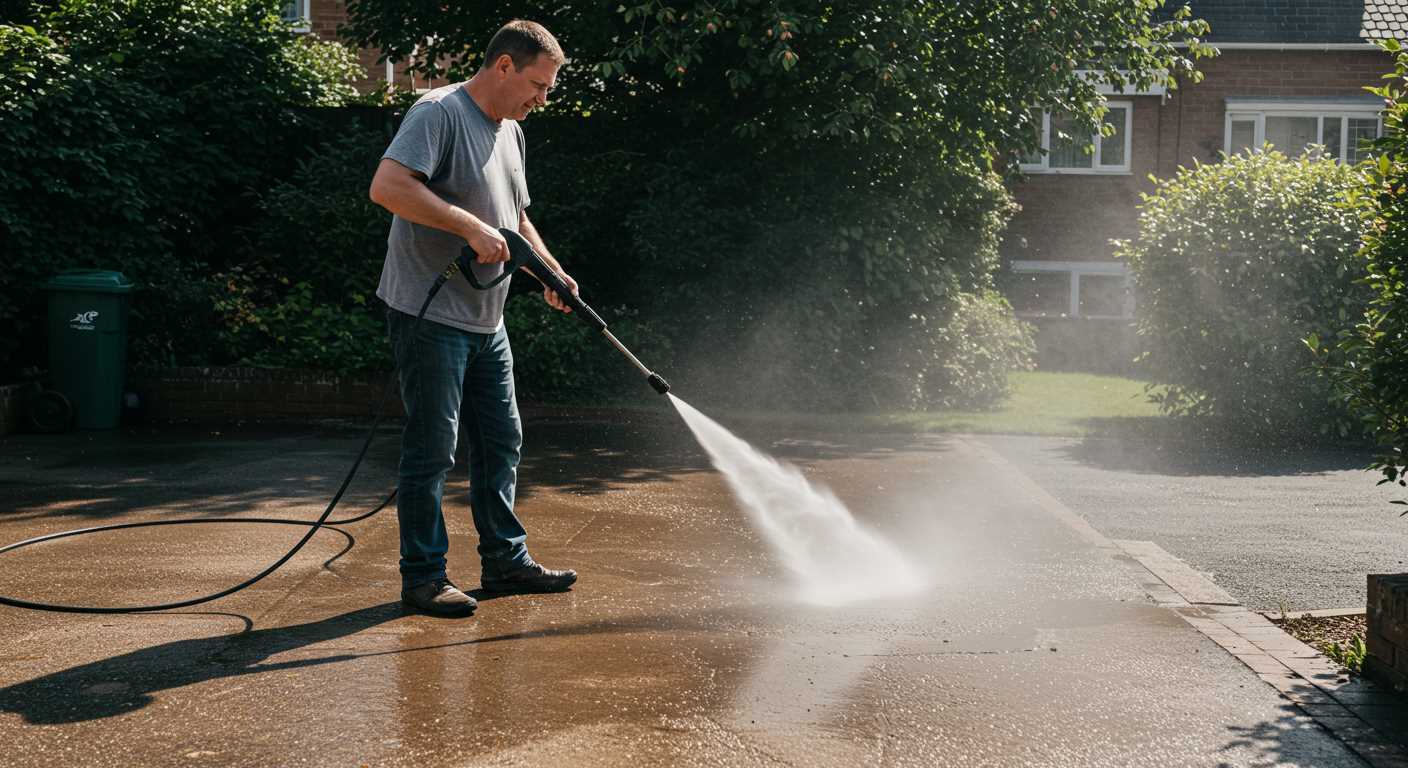
Choosing an appropriate adapter is critical for achieving a seamless connection between your water supply and cleaning unit. Start by determining the size and thread type of your existing fittings. Most fittings either use a standard 3/4-inch thread or a 1/2-inch thread; however, some models may require specific sizes. Use a measuring tape to avoid any discrepancies.
The following table outlines common thread sizes and their respective adapters:
| Thread Size | Adapter Type | Notes |
|---|---|---|
| 3/4 inch | Standard Garden Thread (SGT) | Most common size for residential applications. |
| 1/2 inch | Small Garden Thread (SGT) | Less common; check your unit specifications. |
| 3/4 inch | Quick Connect Fittings | Facilitates easy connection and disconnection. |
| G1/2 | European Standard | Commonly used in various European models. |
Once you identify the size, consider the material of the adapter. Brass or stainless steel options provide durability and resistance to corrosion, while plastic adapters are lightweight but may not withstand high pressure as effectively.
It’s wise to check the specifications of both your hose and cleaning apparatus, as compatibility is key to preventing leaks and enhancing performance. If complications arise, consult the manufacturer’s guidelines or customer support for assistance specific to your model.
Step-by-Step Guide to Connecting Hoses
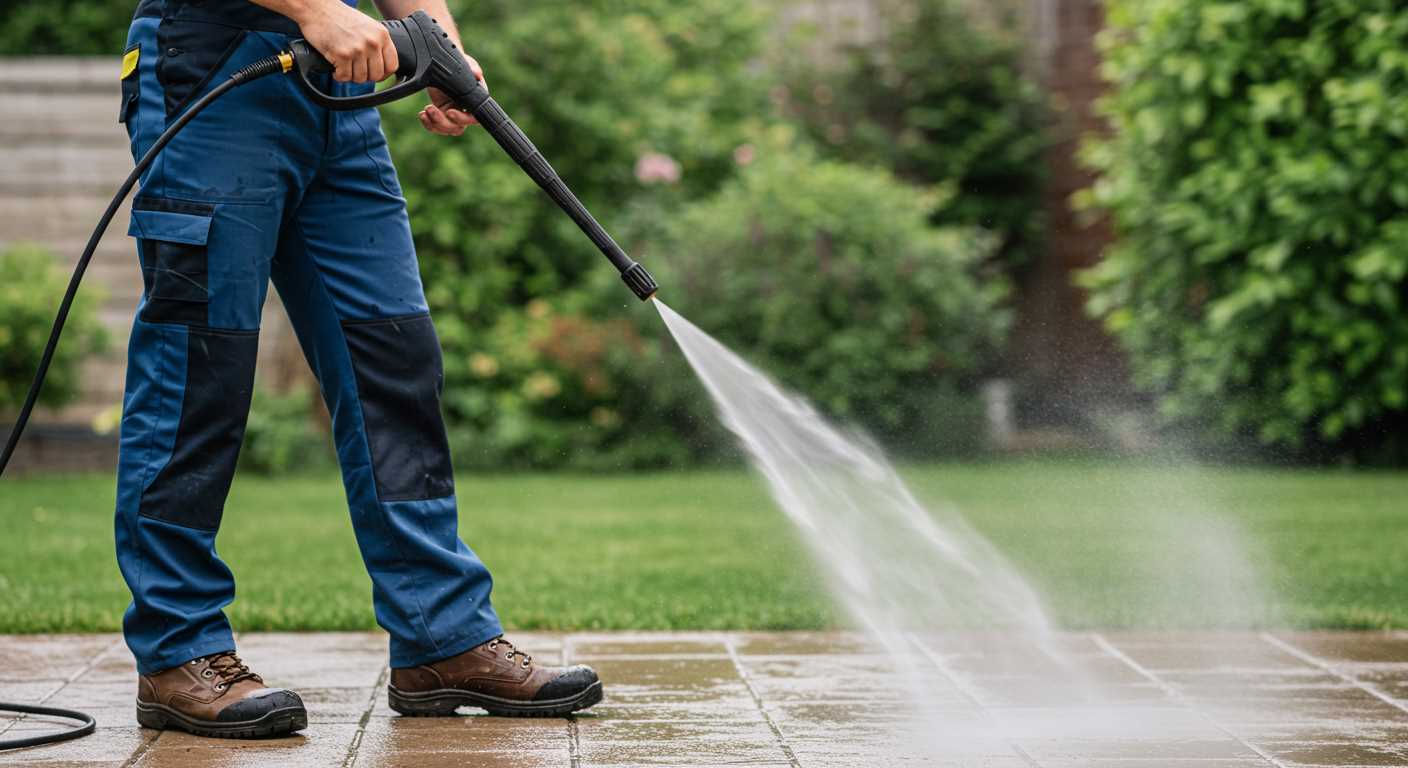
Ensure both your cleaning unit and water source are easily accessible before beginning the assembly process.
- Inspect the Inlet: Examine the inlet of your cleaning apparatus to determine if it requires a quick-release mechanism or a standard threaded fitting.
- Secure the Adaptor: If you are using an adaptor for compatibility, slide it onto the inlet and fasten it tightly, ensuring there are no gaps for leaks.
- Prepare the Pipe: Take your flexible tubing and check the ends for damage. Ensure they are clean and free from debris to guarantee a proper seal.
- Attach the Hose: Firmly attach one end of the tubing to the adaptor, twisting it clockwise to achieve a snug fit.
- Tighten the Connection: Utilize pliers if necessary but avoid overtightening to prevent damage. A hand-tight connection is typically sufficient.
- Connect to Water Supply: Take the opposite end of the tubing and attach it to your water source. Once again, ensure it is tightly secured.
- Check for Leaks: Turn on the water supply to verify there are no leaks at either connection. If any leaks are detected, re-tighten the fittings.
- Commence Operation: With everything in place, start your cleaning device and monitor for any unusual sounds or leaks during operation.
Additional Tips
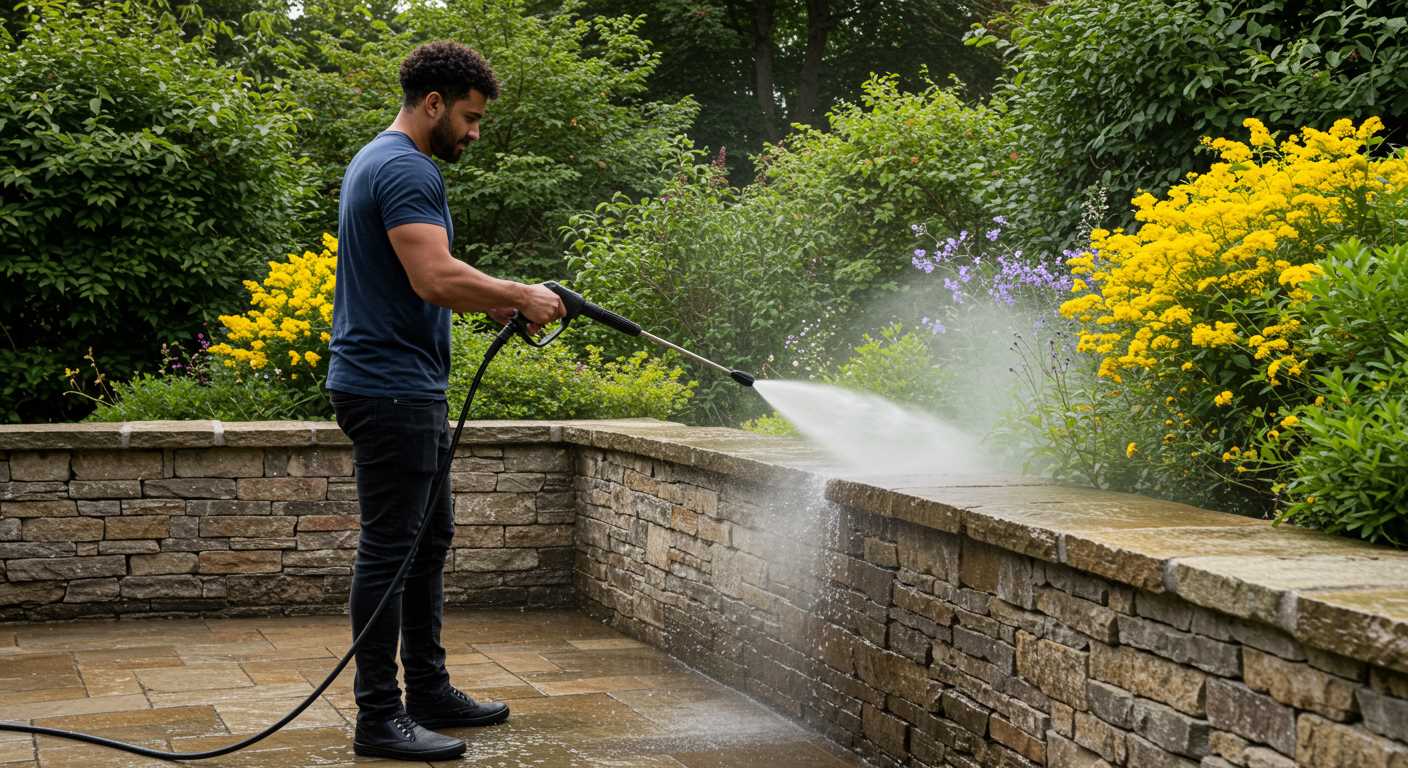
- Consider using thread seal tape on the threaded fittings to enhance the waterproof seal.
- Regularly inspect connections before each use to prolong the life of both the tubing and the equipment.
Common Issues with Hose Connections and Solutions

Leakage is a frequent problem. Ensure all fittings are secured tightly. Use Teflon tape on threaded connections to enhance the seal. If leaks persist, check for cracks or damage in the rubber parts, and replace them if necessary.
Another issue is inconsistency in water flow. This can result from kinks or twists in the tubing. Regularly inspect for any obstructions along the line. A smooth, obstacle-free run from the source to the device is vital for proper operation.
Compatibility troubles are common as well. It’s possible to misalign sizes, especially if equipment or tubing is from different manufacturers. Always verify measurements before purchasing any accessories. Keep a size chart handy for quick reference.
Noise during operation may signal a problem. Unusual sounds can emerge from air trapped in the lines. To remedy this, detach the fitting and let water flow until all air is expelled, then reconnect to resume usage.
Contamination can also occur. Dirt and debris in connections can compromise performance. Routine maintenance should include checking and cleaning all attachments to prevent buildup, which can impede water flow and pressure.
If experiencing burst connections, confirm that the pressure settings on the tool are within safe limits for the tubing being used. Overexerting can lead to failures, so adjust accordingly to prevent future issues.
Lastly, ensure that all hardware is rated for the specific tasks being performed. Using an incorrect type can lead to premature wear or failure, so always consult the product guidelines for optimal compatibility.
Maintenance Tips for Pressure Washer Connections
Regular cleaning and maintenance of fittings are key to preventing leaks and ensuring optimal performance. I recommend using a soft brush or cloth to remove dirt and debris that may accumulate around attachment points. This simple step can significantly prolong the lifespan of your machine.
Inspect and Replace Seals
Check rubber seals frequently for signs of wear, cracking, or damage. Replacing these seals can prevent leaks and improve the overall efficiency of the system. I advise keeping spare seals on hand for quick replacements.
Store Hoses Properly
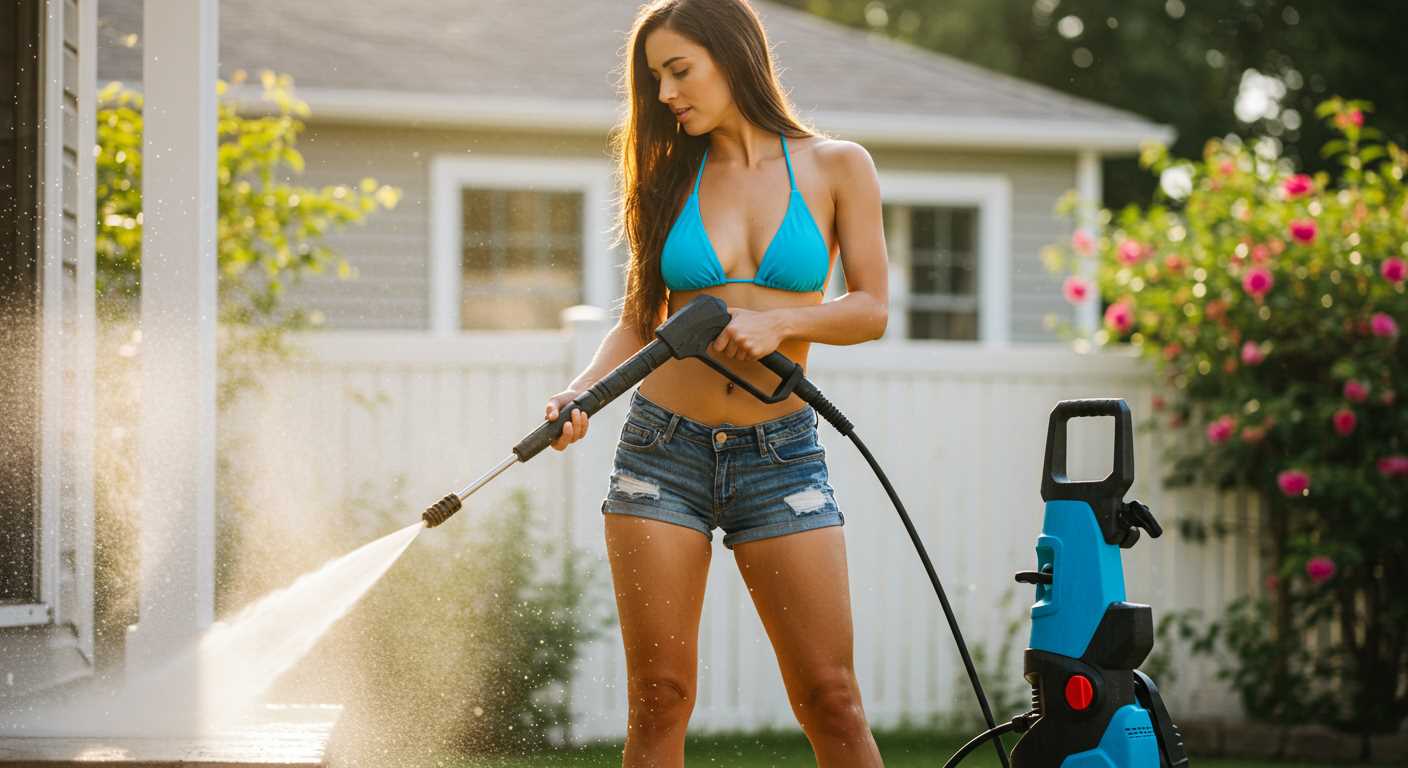
Coil hoses neatly and avoid sharp bends or kinks that might lead to cracks. Store them in a cool, dry place away from direct sunlight. Exposure to UV light can degrade materials over time, leading to premature failure.
FAQ:
What type of connector do I need to link my garden hose to a pressure washer?
To connect a garden hose to a pressure washer, you typically need a standard ¾ inch hose connector. Most pressure washers come with a quick-connect adapter that fits onto the hose, allowing for a secure and leak-proof connection. Always check the specifications of your pressure washer to confirm the size and type of connector required.
Can I use a garden hose with a different diameter for my pressure washer?
Using a garden hose with a different diameter may lead to compatibility issues. Pressure washers are designed to work optimally with a ¾ inch diameter hose. While some pressure washers might accommodate hoses of different diameters, it can affect the water flow and pressure performance. It’s best to stick to the recommended size for efficient operation.
What should I do if my garden hose connector doesn’t fit the pressure washer?
If your garden hose connector does not fit the pressure washer, you can purchase an adapter specifically designed for this purpose. Adapters can convert various connector sizes, allowing you to use your existing garden hose with the pressure washer. Make sure to check the size of the fittings on both the hose and the pressure washer before buying an adapter to ensure a proper fit.
How can I prevent leaks when connecting my garden hose to a pressure washer?
To prevent leaks while connecting your garden hose to a pressure washer, ensure that both the hose and the connector are clean and free from debris. Before attaching the hose, check the rubber O-ring in the connector for any wear or damage; if necessary, replace it. When connecting, tighten the hose connector firmly but avoid over-tightening, as this can also lead to leaks.
Is there a specific brand of hose connector that is recommended for pressure washers?
While there are many brands available, it’s generally recommended to use connectors that are compatible with your specific pressure washer model. Popular brands like Hozelock and Gardena offer a range of connectors known for their quality and durability. Always refer to your pressure washer’s manual for manufacturer recommendations on compatible connectors to ensure reliability and performance.



